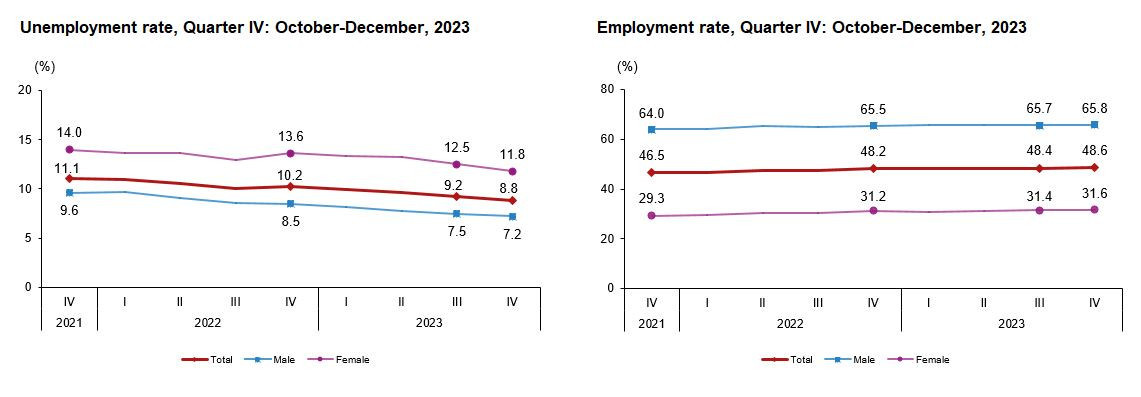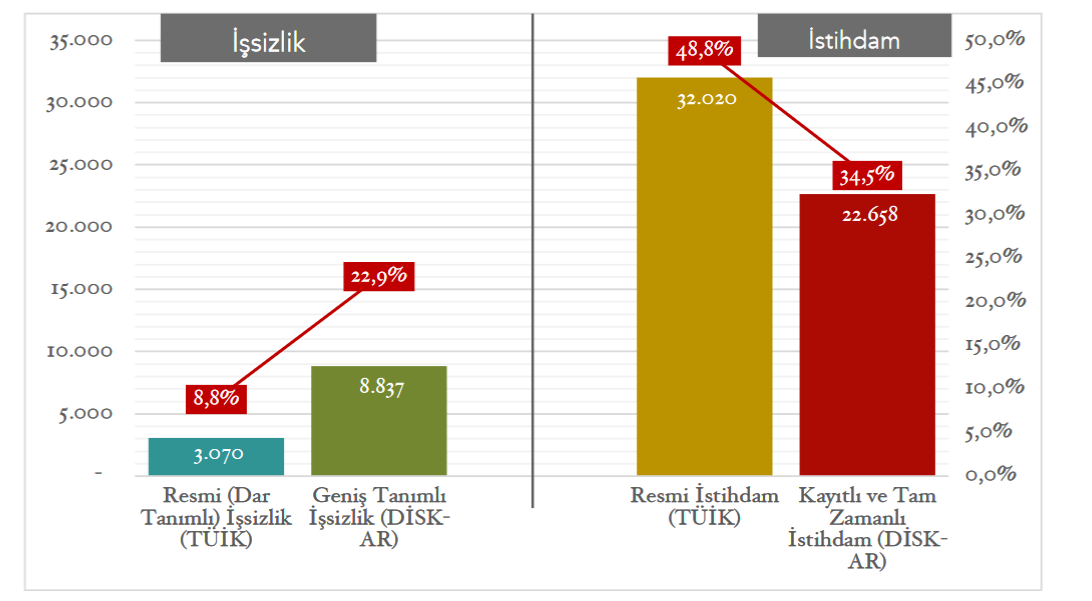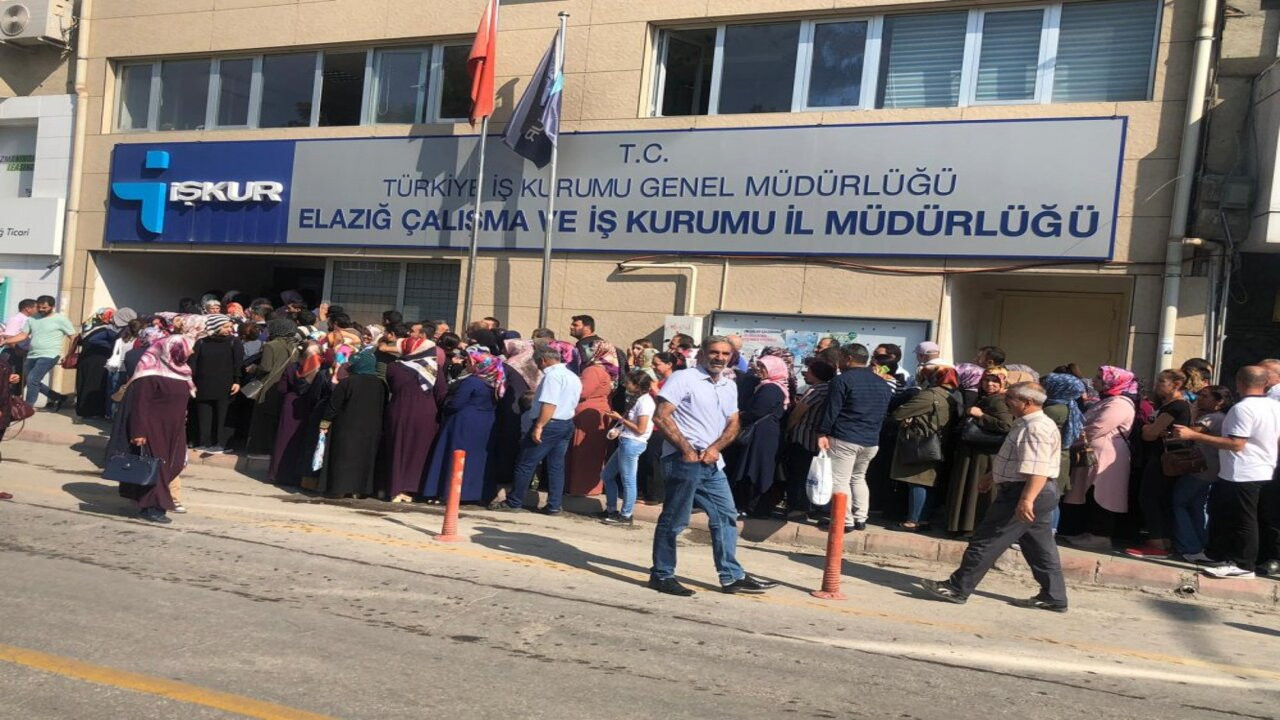Only one-third of Turkey's working-age population employed, labor union reveals
Only one-third of Turkey's 65.6 million working-age population was employed in the fourth quarter of 2023, according to the Research Center of the Confederation of Progressive Trade Unions of Turkey (DİSK-AR). Only one in every five women were in formal, full-time employment.
Duvar English
Merely 22.7 million out of 65.6 million people who are able to work in Turkey were employed in formal and full-time employment, according to the "Outlook of Unemployment and Employment" report of the Confederation of Revolutionary Trade Unions Research Center (DİSK-AR) for the last quarter of 2023.
The state-run Turkish Statistical Institute (TÜİK) on Feb. 19 announced that, in the fourth quarter of 2023, the country’s seasonally adjusted unemployment rate dropped by 0.4 percentage points to 8.8%, with 3.070 million unemployed persons aged 15 and over. The adjusted employment rate increased by 0.2 percentage points to 48.6%, with 31.87 million.

DİSK-AR noted that the official employment data of TÜİK showed only “a limited part of the truth” about the labor market.
According to DİSK-AR, the broad-defined unemployment rate in the fourth quarter of 2023 was 23 percent, which means that there is a difference of 5.8 million people between the narrow-defined unemployment rate used by TÜİK.

The narrow definition considers unemployed individuals who actively searched for work in a specific time frame while broader definition expands this by including those who desired employment but did not actively seek it during the reference period.
According to DİSK-AR's analysis of TÜİK data, the Registered Full-Time Employment (KATİ) rate stood at 34.5 percent, notably lower than the official employment rates. Specifically, for women, the KATİ rate was 20.1 percent compared to the official rate of 31.8 percent, while for men, it was 49.2 percent versus the official rate of 66.1 percent.
Only one out of every five women was in formal and full-time employment.
The KATİ rate was 14.3 points lower than the official employment rate in general, 11.7 points lower for women and 16.9 points lower for men. “This situation reveals the relatively low level of qualified employment,” according to the DİSK-AR.
DİSK-AR underscored that the KATİ rate aimed to reveal what proportion of the employed people were insured and working full-time.
The union also drew attention to the youth unemployment rate and stated that since the ruling Justice and Development Party (AKP) came to power in the third quarter of 2002, the broadly defined youth unemployment rate has increased from 26 percent to more than 32 percent.

 Turkey’s real unemployment figures surpass official statements by five million, labor union saysEconomy
Turkey’s real unemployment figures surpass official statements by five million, labor union saysEconomy One in 10 unemployed among OECD members resides in TurkeyEconomy
One in 10 unemployed among OECD members resides in TurkeyEconomy Turkey has lowest employment rate among OECD countriesEconomy
Turkey has lowest employment rate among OECD countriesEconomy